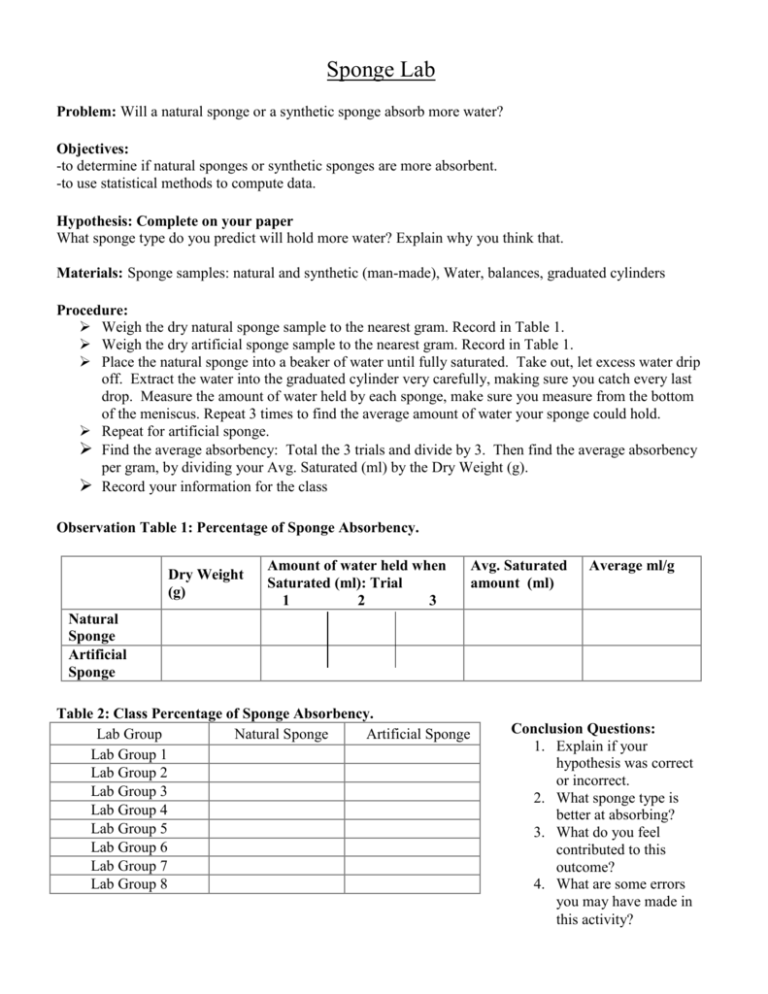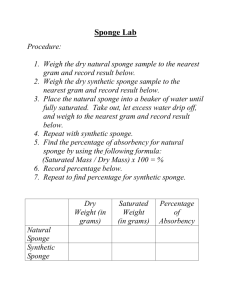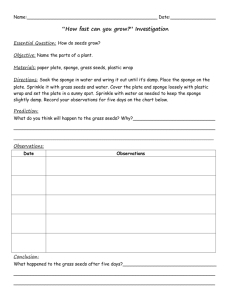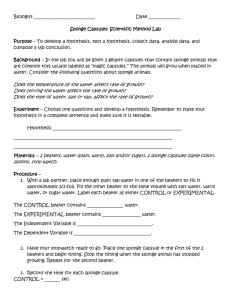Sponge Absorbency Lab: Natural vs. Synthetic
advertisement

Sponge Lab Problem: Will a natural sponge or a synthetic sponge absorb more water? Objectives: -to determine if natural sponges or synthetic sponges are more absorbent. -to use statistical methods to compute data. Hypothesis: Complete on your paper What sponge type do you predict will hold more water? Explain why you think that. Materials: Sponge samples: natural and synthetic (man-made), Water, balances, graduated cylinders Procedure: Weigh the dry natural sponge sample to the nearest gram. Record in Table 1. Weigh the dry artificial sponge sample to the nearest gram. Record in Table 1. Place the natural sponge into a beaker of water until fully saturated. Take out, let excess water drip off. Extract the water into the graduated cylinder very carefully, making sure you catch every last drop. Measure the amount of water held by each sponge, make sure you measure from the bottom of the meniscus. Repeat 3 times to find the average amount of water your sponge could hold. Repeat for artificial sponge. Find the average absorbency: Total the 3 trials and divide by 3. Then find the average absorbency per gram, by dividing your Avg. Saturated (ml) by the Dry Weight (g). Record your information for the class Observation Table 1: Percentage of Sponge Absorbency. Dry Weight (g) Amount of water held when Saturated (ml): Trial 1 2 3 Avg. Saturated amount (ml) Average ml/g Natural Sponge Artificial Sponge Table 2: Class Percentage of Sponge Absorbency. Lab Group Natural Sponge Artificial Sponge Lab Group 1 Lab Group 2 Lab Group 3 Lab Group 4 Lab Group 5 Lab Group 6 Lab Group 7 Lab Group 8 Conclusion Questions: 1. Explain if your hypothesis was correct or incorrect. 2. What sponge type is better at absorbing? 3. What do you feel contributed to this outcome? 4. What are some errors you may have made in this activity? Totals Avg. Absorbency








